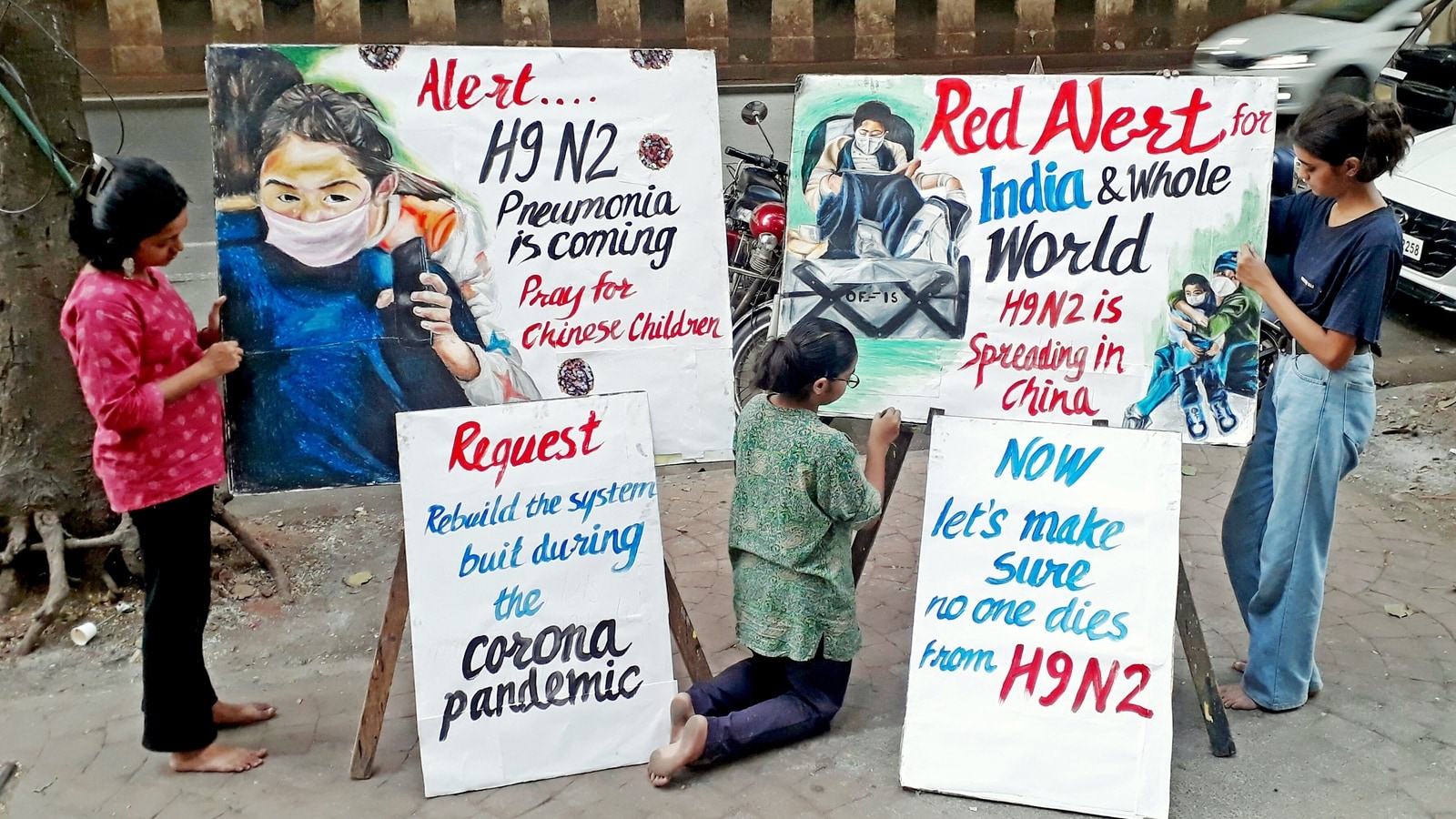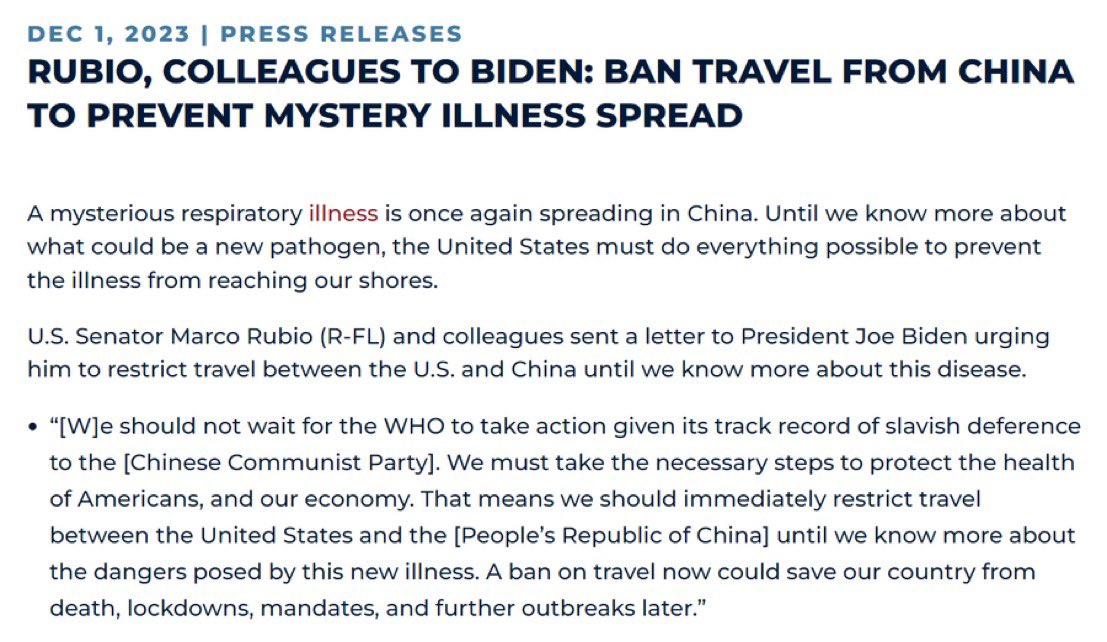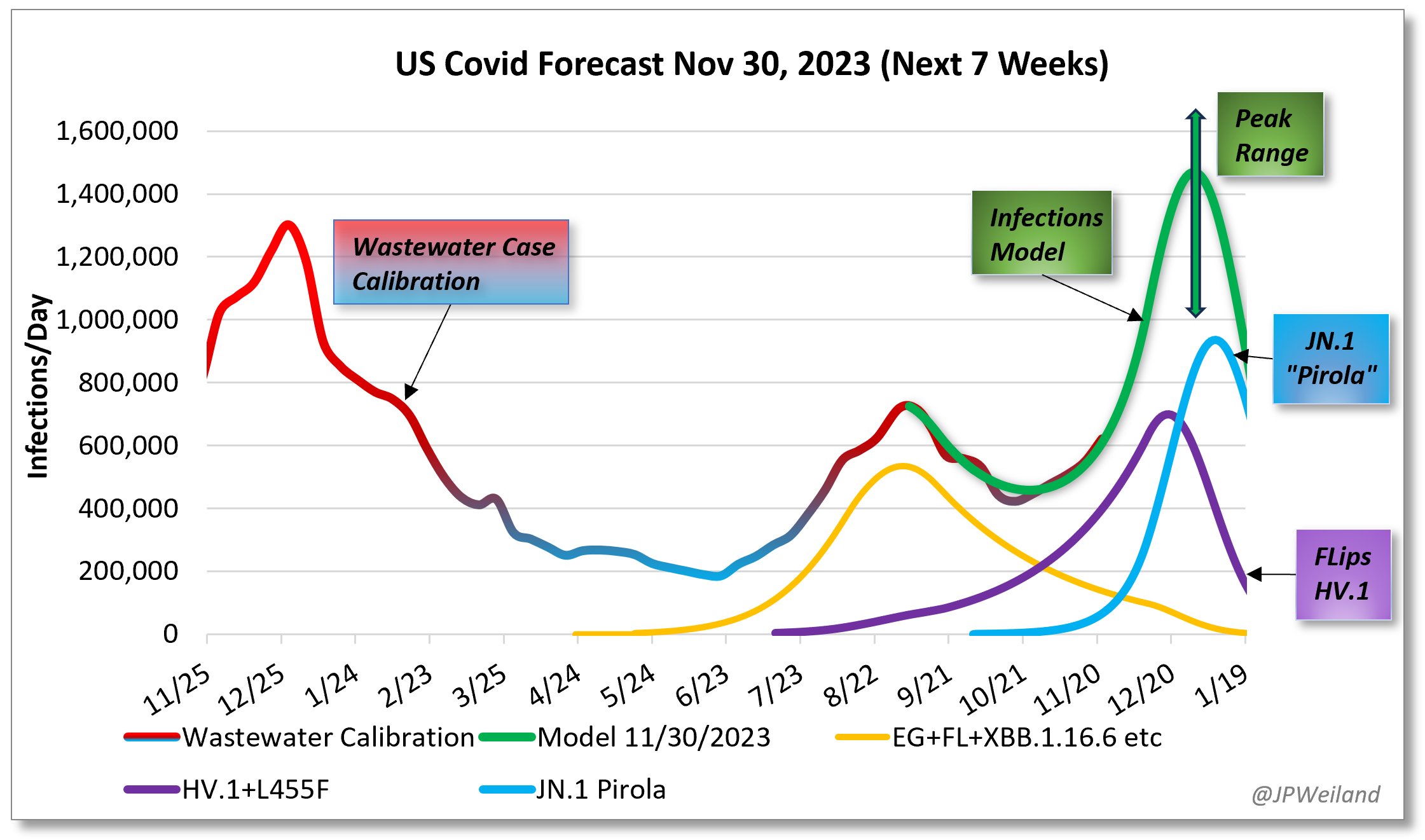Maha health dept ramps up med infra after pneumonia outbreak in China (INDIA)
Nov 30, 2023PMC health department on Friday issued a letter to hospital superintendents, zonal medical officers and ward medical officers directing them to ensure medical infrastructure and systems are fully functional
Following reports of mysterious pneumonia outbreak in China, the civic health department in Pune is overhauling its medical infrastructure after the state health department released advisory on Wednesday to local bodies to monitor influenza-like illness (ILI) and severe acute respiratory illness (SARI) and reviewing preparedness to tackle such illnesses.
The Pune Municipal Corporation (PMC) health department on Thursday issued a letter to hospital superintendents, zonal medical officers (ZMO) and ward medical officers (WMO) directing them to ensure Covid-19 infrastructure and systems are fully functional.
They have been further asked to start surveillance and monitor SARI and ILI cases reported in the city, said the official. As per the advisory, all districts have been asked to conduct a thorough examination of Covid infrastructure, including beds, oxygen plant cylinders, ventilators, and other critical systems that are fully functional.
Hospitals are instructed to send samples of ILI/SARI patients to RT-PCR labs for testing and some samples for genomic sequencing at the National Institute of Virology, Pune.
Dr Suryakant Devkar, assistant health officer of PMC, said, “We have issued a letter to all ward offices and hospitals to start monitoring all influenza cases. These cases will be tested for influenza viruses like H3N2, H1N1 and Covid-19. The samples of pneumonia patients will be sent for testing and samples of severe patients will be sent to NIV for genomic sequencing. Currently, the influenza situation in the city is under control.”
Dr Devkar said that information, education and communication (IEC) activities for influenza illness and Covid-19 have been started in the city.
“The health staff working in municipal hospitals have been asked to follow hygiene and start using a face mask, PPE kits and sanitisers as per the requirement,” he said.
District civic surgeon Dr Nagnath Yempalay said around 100 beds have been made ready at the Aundh District Hospital to handle any untoward spike in cases.
“The entire setup is ready with trained staff, oxygen plant and medicines. We have an adequate stock of medicines which will last for the next six months. We can increase the bed capacity to 300 beds if required. We are closely monitoring pneumonia and flu cases,” he said.
Dr Pratapsinh Sarnikar, joint director of health services, said there is no need to panic as currently there is no danger of the new mysterious pneumonia to Maharashtra.
The department has been cautious following the Covid pandemic.
“The public health department and private doctors should be cautious and prevent any unlikely outbreak of influenza cases,” he said.

Maha health dept ramps up med infra after pneumonia outbreak in China
PMC health department on Friday issued a letter to hospital superintendents, zonal medical officers and ward medical officers directing them to ensure medical infrastructure and systems are fully functional
Pneumonia outbreak in China: How Indian states are preparing
Last week, the Centre had asked all states and Union Territories to review hospital preparedness.
In view of the mysterious pneumonia outbreak in China, several states in India are overhauling their medical infrastructure.
China has been seeing a spike in cases of respiratory illnesses among children, forcing the closure of schools in the northern part of the country. On Sunday, China's National Health Commission spokesperson Mi Feng had said that the surge in acute respiratory illnesses was linked to the simultaneous circulation of several kinds of pathogens, most prominently influenza.
The spike became a global issue after the World Health Organization prodded China for more information about the outbreak.
Last week, the Centre had asked all states and Union Territories to review hospital preparedness, saying that the health ministry is closely monitoring the rise of respiratory illness cases in China among children.
As a matter of abundant caution, also because of the ongoing influenza and winter season, the ministry had asked the states to check their hospital preparedness measures such as hospital beds, drugs and vaccines for influenza, medical oxygen, antibiotics, PPE etc.
Pneumonia outbreak in China: Here's what states are doing about it.
Tamil Nadu
Tamil Nadu health minister Ma. Subramanian on Wednesday said that the state's public health department is very carefully investigating the fevers that occur in children.
“Pneumonia fever has been detected in China. It has been found to affect children more. In this regard, the public health department is very carefully investigating the fevers that occur in children. The new type of fever has not been detected anywhere in Tamil Nadu,” Subramanian said, according to ANI.
He added that fever camps are being held every week to detect the ongoing rainy season outbreaks. "This will be held every Saturday for another 5 weeks," the minister said.
Dr Selvavinayagam, director of Tamil Nadu Public Health and Preventive Medicine, told the news agency that there have been no significant cases detected as of now in the state and that there was no need to be alarmed.
“We have already established the surveillance part, where we will be requesting all the institutions to report to us on the IHIP (Integrated Health Information Portal) portal... With regard to infrastructure, our team is capable of expanding the required infrastructure at any time...” he said.
Gujarat
Gujarat health minister Rushikesh Patel said that the state government and the Central government are ready for any kind of emergency which may arise due to the surge in respiratory illness cases in China.
He said that the state has re-examined the oxygen availability and bed preparations made during the period of the Covid-19 pandemic in Gujarat.
“Union health minister Mansukh Mandaviya and ICMR are keeping a close watch on this and have also issued an advisory on this,” Patel told ANI. "We have re-examined the oxygen availability and bed preparations made during the COVID period in Gujarat. Arrangements have also been made to create a separate ward for such cases."
He added that there has been no news of any casualties from China, but still, the Gujarat and Central governments have made their preparation.
Karnataka
In Karnataka, state health minister Dinesh Gundu Rao also said that there was no need to panic about the illness, but added that hospitals in the state are prepared for any kind of emergency.“I told officers to look into all that. We also received guidelines from the Government of India. We have now told all our hospitals to be prepared - to just check the preparations, do some mock drills, see the availability of oxygen, beds, PPE kits and keep a lookout. Right now there is nothing to panic about, there is no such situation,” he told ANI.
Rao further added that the state will wait for further guidelines from the Government of India. "But we are keeping our hospitals prepared and letting people know about the situation," the minister added.
Rajasthan
The medical and health department in Rajasthan has advised its staff to remain alert and form rapid response teams following a rise in cases of respiratory diseases in northern China.In an advisory, the health department has asked officials concerned to prepare an action plan for the prevention and treatment of the disease, according to PTI.
Additional chief secretary of the department, Shubhra Singh, while addressing officials through video conference on Tuesday, said the situation is “not worrisome at present”.
She, however, cautioned that the medical staff should work with full vigilance for surveillance and prevention of infectious diseases across the state.
Singh also directed officials to prepare an action plan in three days for the prevention and treatment of this disease. She further asked them to appoint a nodal officer at the district and medical college levels and to form rapid response teams at the division and district level, according to PTI.
Uttarakhand
In Uttarakhand, the state government has sounded an alert, directing officials to step up surveillance in the state, according to ANI.
Notably, three districts in the state – Chamoli, Uttarkashi and Pithoragarh – share land borders with China.
The state has directed officials to keep a close vigilance on people suffering through the symptoms of the 'Severe Acute Respiratory Illness' on community level.
"All the district officers and chief medical officers of the state are been directed to make adequate arrangements for isolation beds/wards, oxygen beds, ICU beds, ventilators, and oxygen cylinders for the treatment of pneumonia and influenza flu patients in their respective districts", read an official statement issued by the Health Secretary, according to ANI.
It added: “All the hospitals across districts are directed to ensure the staff availability as well as stock of required medicines in all the hospitals across districts.”

Pneumonia outbreak in China: How Indian states are preparing
Last week, the Centre had asked all states and Union Territories to review hospital preparedness.








